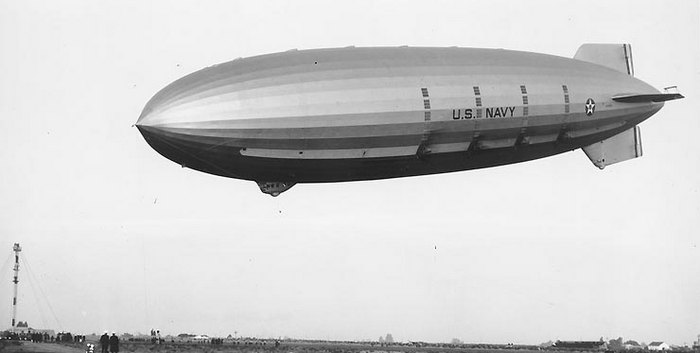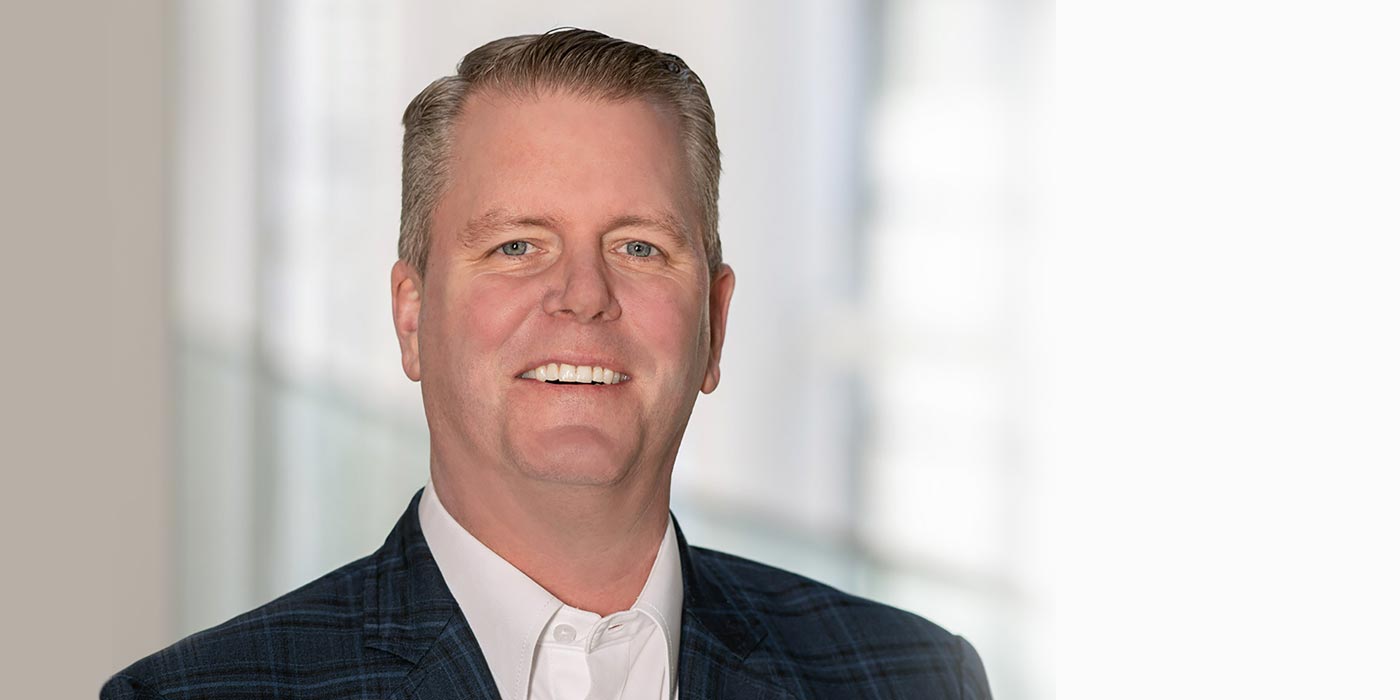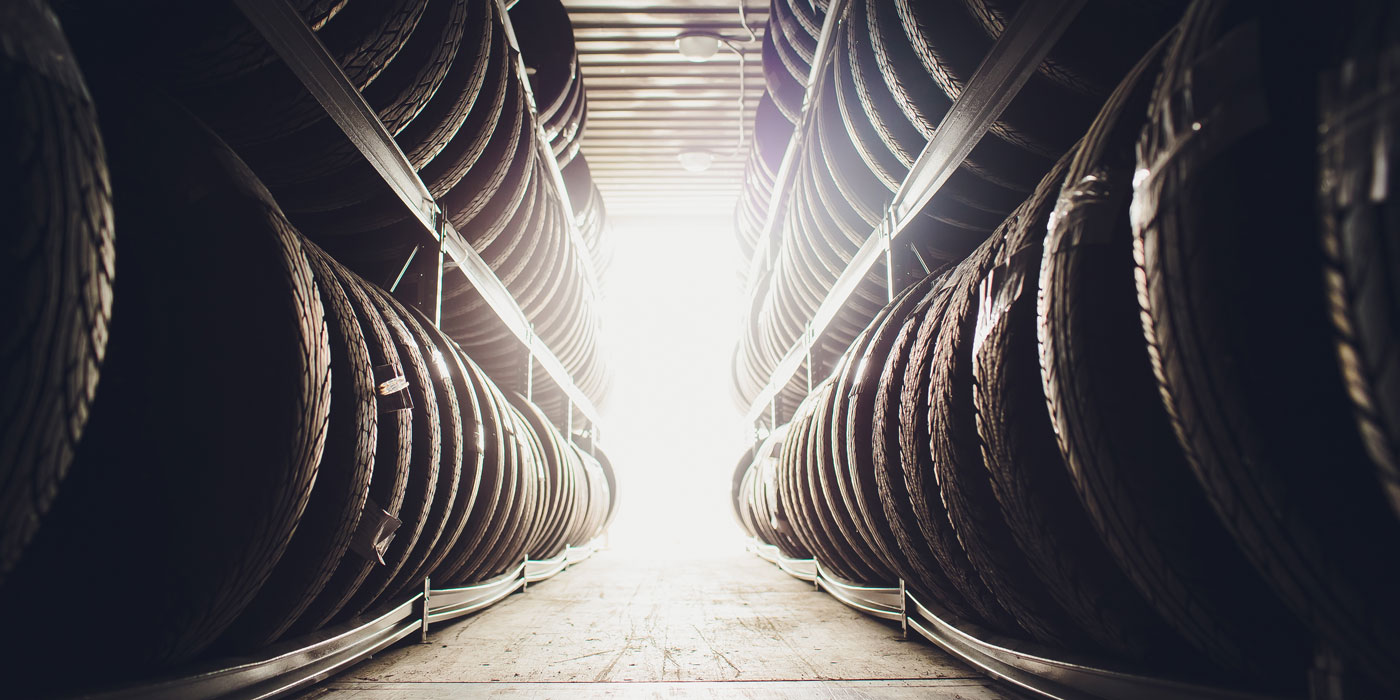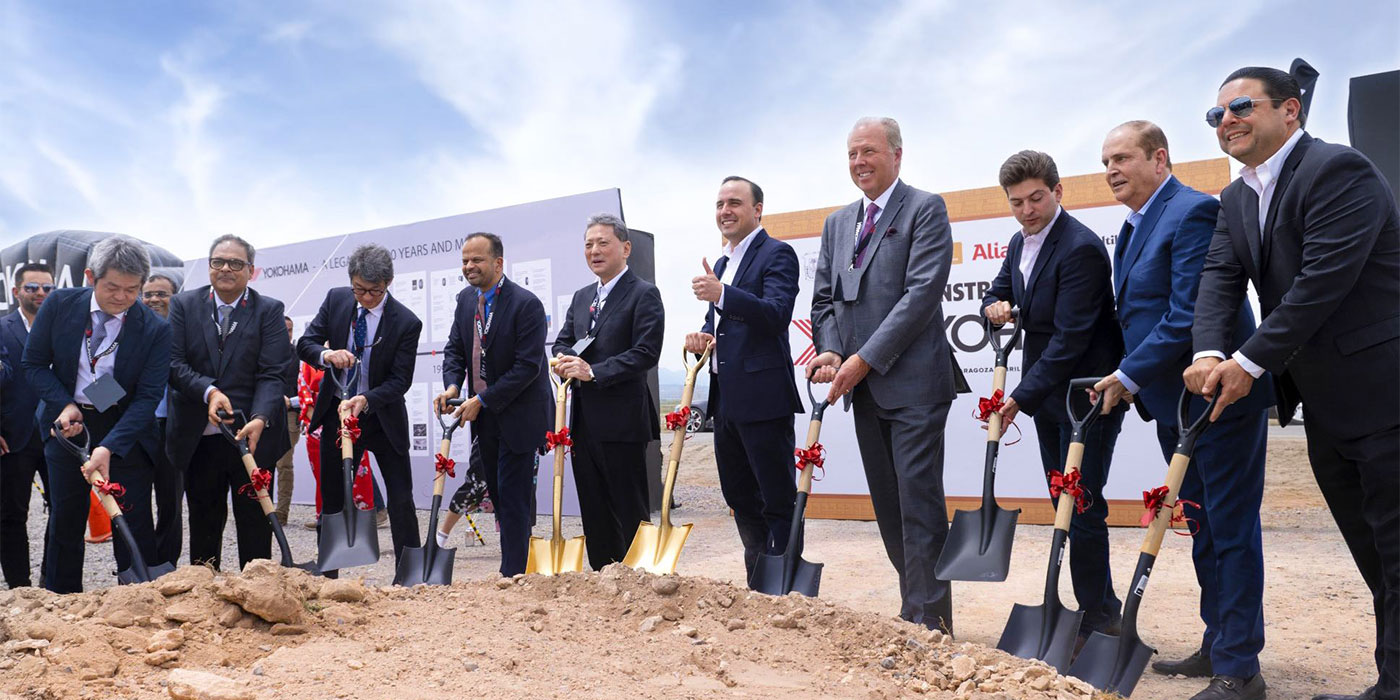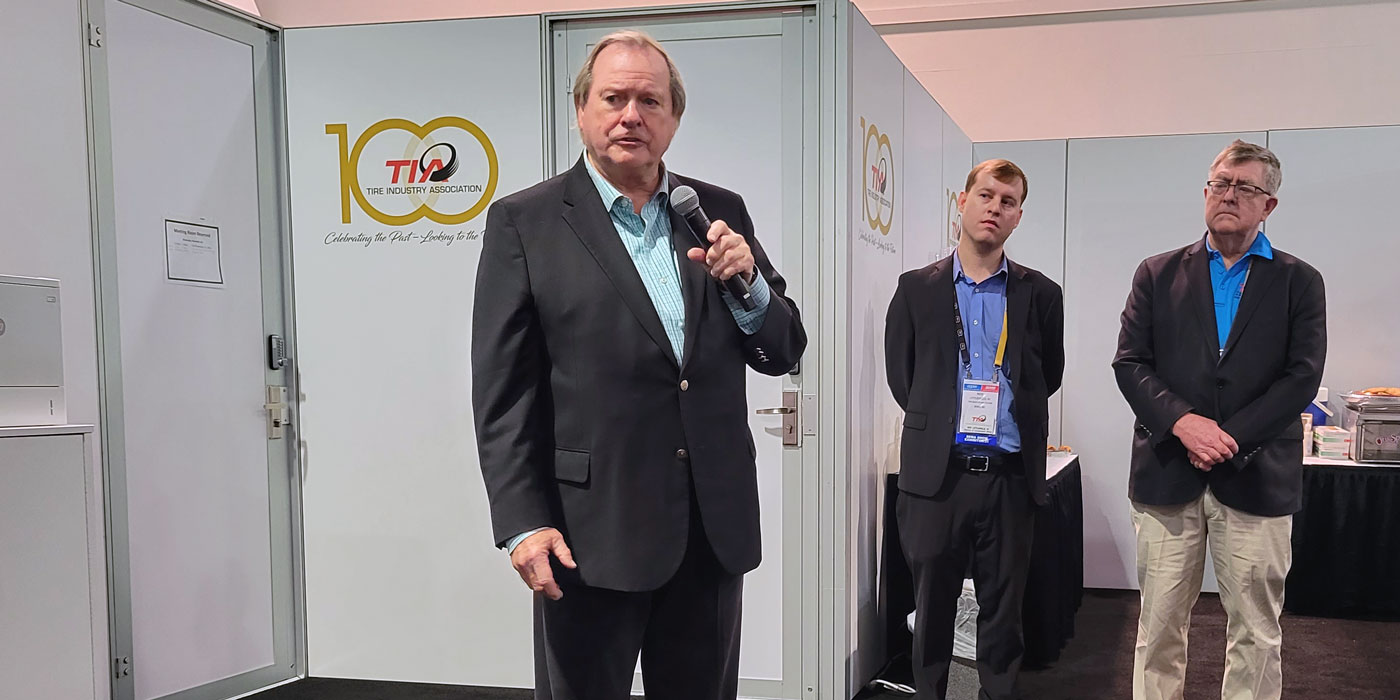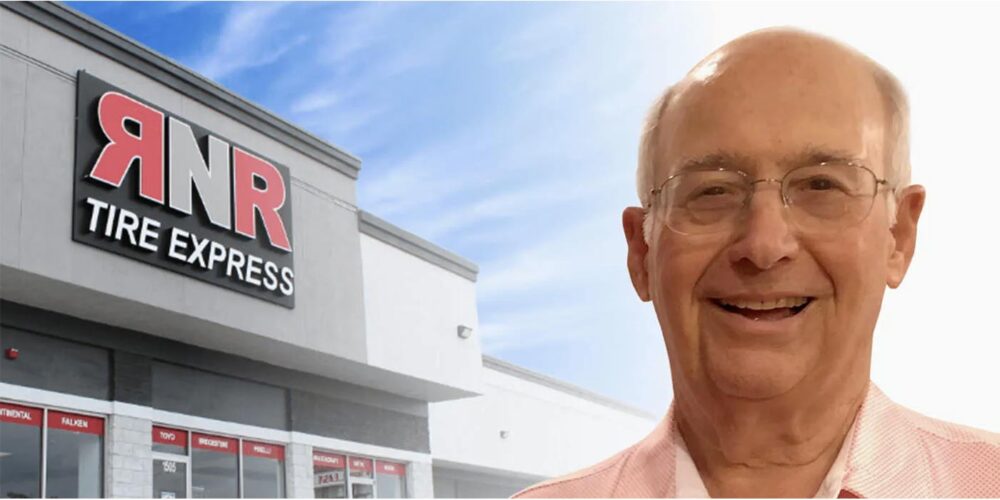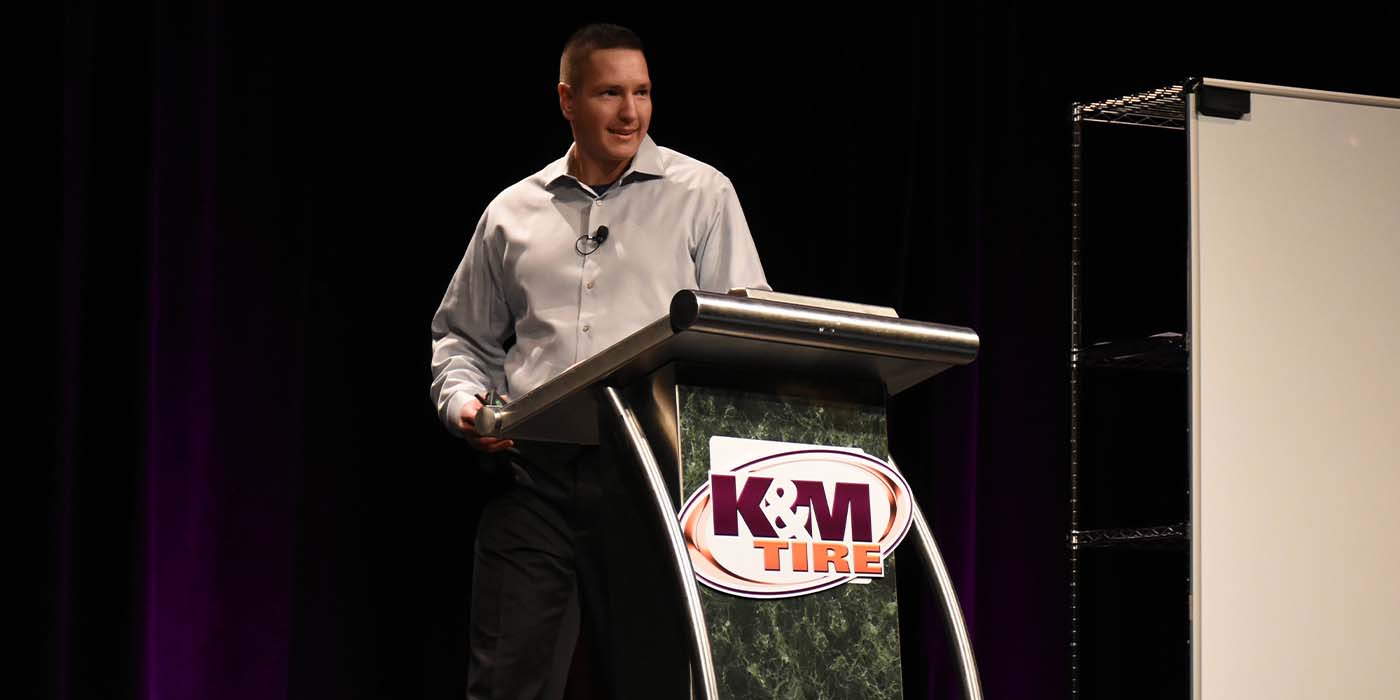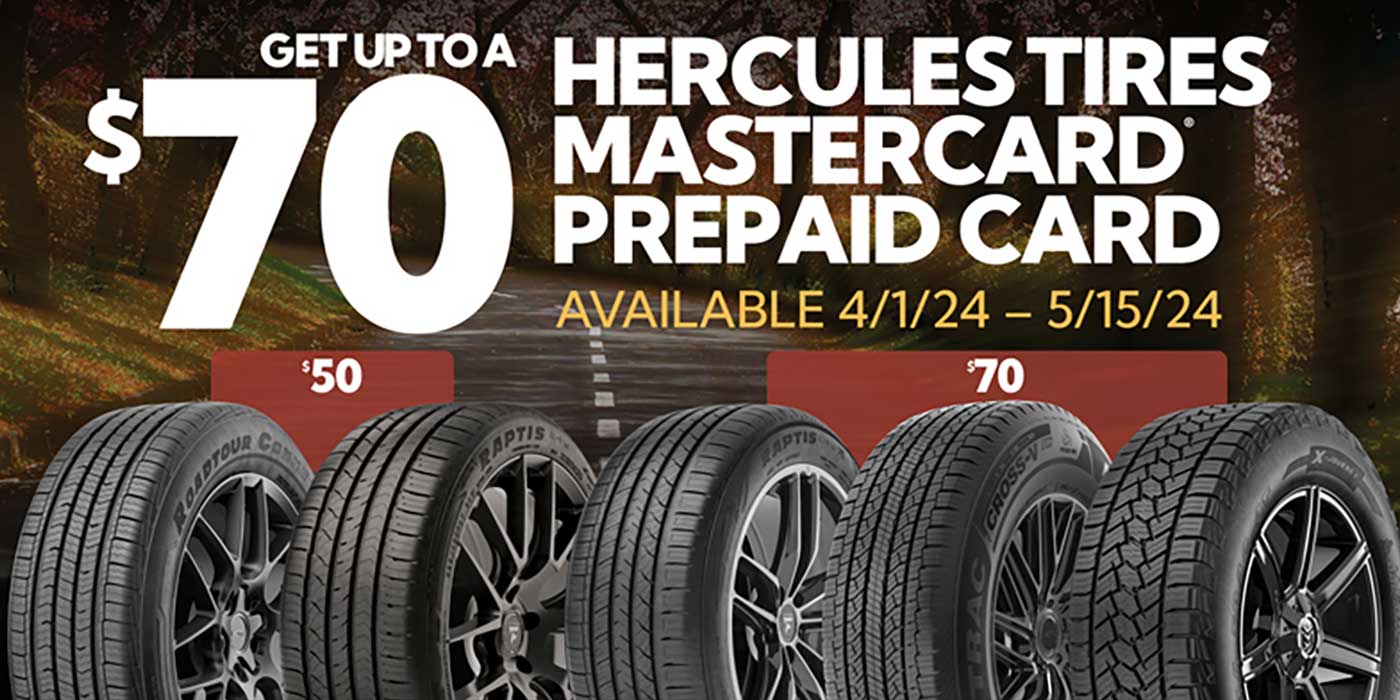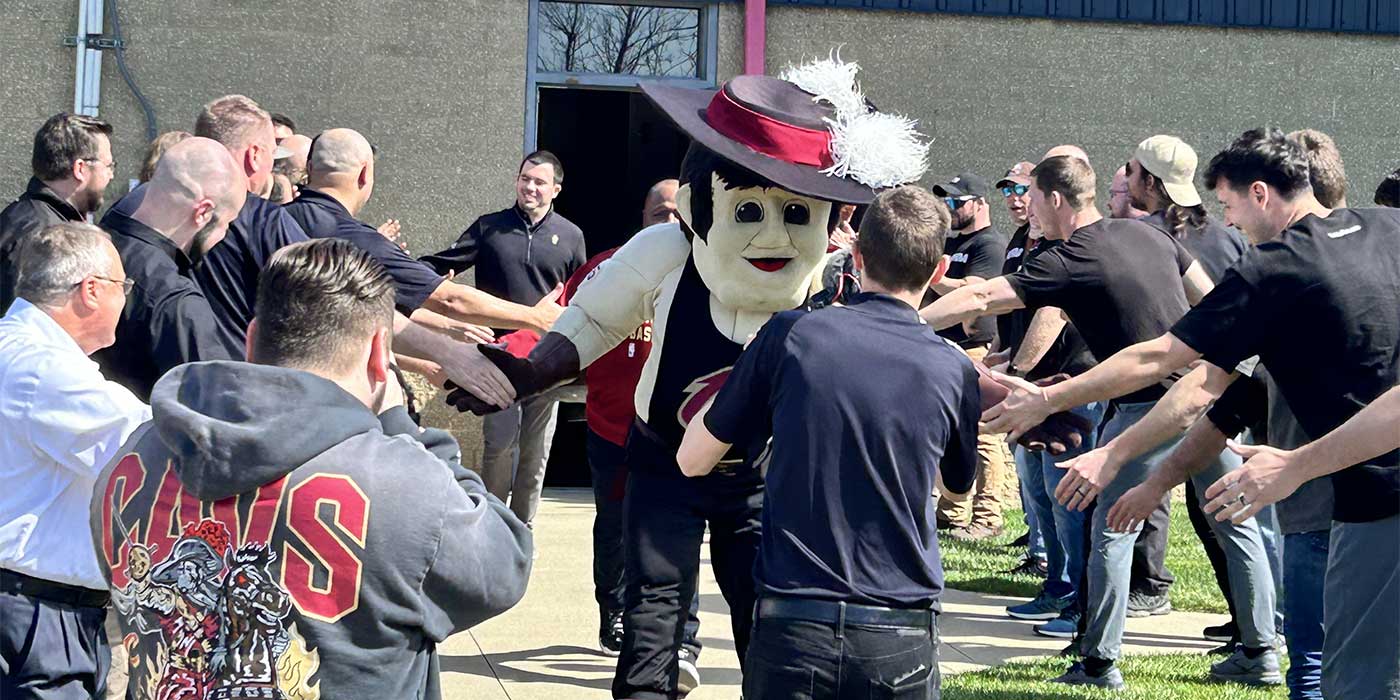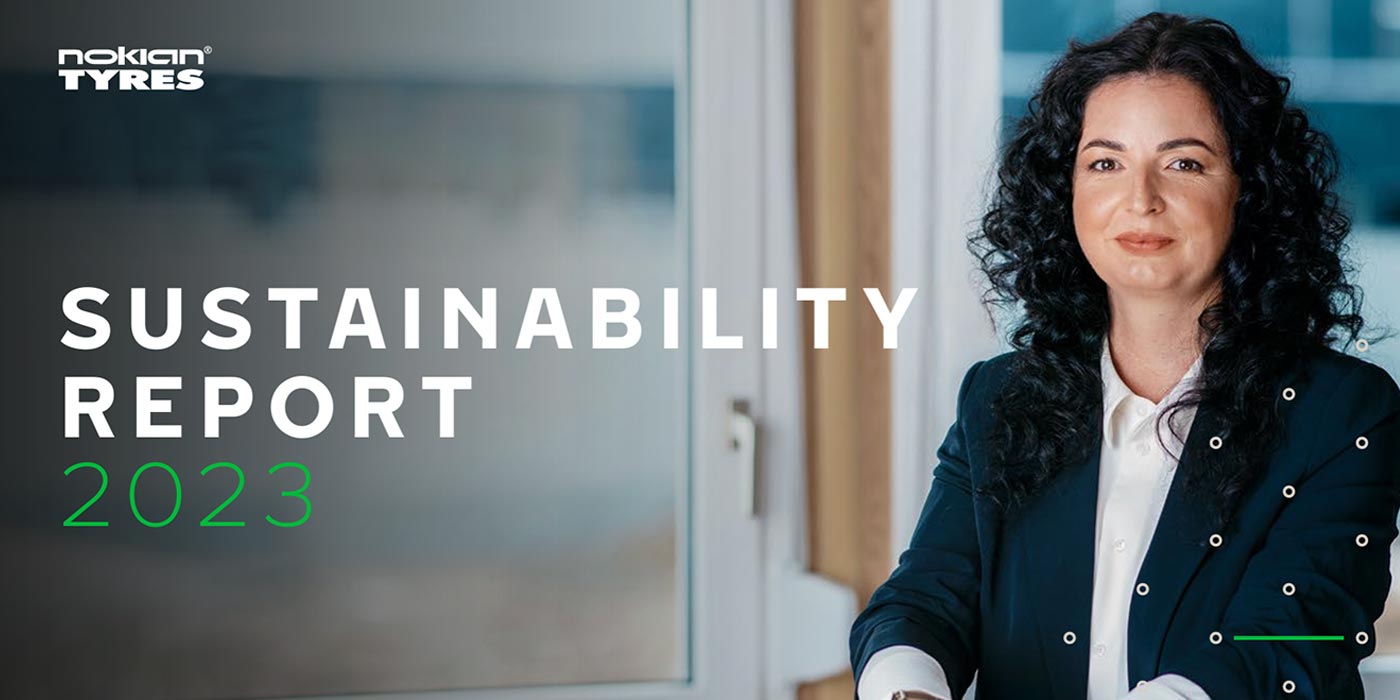Ralph C. Busbey, a newspaper reporter and one time Akron bureau chief for the Cleveland Plain Dealer, became the third editor of the India Rubber Review (now Tire Review) in 1924. He wrote a section focused on the early days of the Akron rubber industry for “A Centennial History of Akron 1825-1925,” a book published by the Summit County Historical Society 90 years ago. We are proud to say that Tire Review served as part of Mr. Busbey’s core research for his eventual 17,000-plus word essay.
Because of its length, we are presenting Mr. Busbey’s epic in five parts – all this week – and in its original language. Please be mindful that this was written in 1925, so there may be certain words and phrases that were common and acceptable in those days that may not appear so today.
Data available on other rubber companies in the Akron district follow:
Good Rubber Co., formed 1923; manufacturers of toy balloons and rubber novelties. Present officers, W. D. Good, president and general manager; S. M. Good, vice president; J. B. Good, secretary, and E. K. Good, treasurer. Capitalized at $10,000.
Independent Rubber Co., incorporated 1911 by S. G. Rogers, A. J. Rowley, G. A. Sirdefield and R. H. Nesbitt to manufacture rubber goods. Present officers: C. C. McCue, president; W. H. K. Rose, vice president; H. G. Goodwin, secretary and treasurer.
Summit Rubber Co., incorporated in 1922 for $125,000, although established in 1917 by M. Nobil and Charles Schwartz. Present officers: M. Nobil, president; Charles Schwartz, treasurer and general manag¬er ; G. B. Nobil, secretary.
The Western Reserve Rubber Co., manufacturers of rubber toy balloons was incorporated in 1915 with Arthur P. Witten as president. Authorized capital, $50,000. George E. Hall is secretary and treasurer, and Mr. Witten president.
The Sun Rubber Co., of Barberton, manufacturers of rubber sundries, represents the merger of the Marlanite Co., of Barberton and the Sumatra Rubber Co., of Salem. Officers are J. T. McLane, president; T. W. Smith, vice president and sales manager; M. S. Lower, vice president, and general manager and secretary, and E. B. Billick, treasurer. The company is capitalized at $200,000.
The Marathon Rubber Co., of Akron, represents a recent reorganization of the original Marathon Company. C. C. Osmun is president; C. E. Falor, vice president and factory manager.
The Eclat Rubber Co., of Cuyahoga Falls was started in 1919 by W. H. Stilwell, now president, to manufacture mechanical rubber goods. The company is capitalized at $250,000. Other present officers are C. C. Crumrine, vice president; E. F. Ast, treasurer and C. E. Reiss, secretary.
The Trump Bros. Rubber Co., tire and mechanical goods manufacturers, started in 1921 with $200,000 capital stock. Officers are E. H. Trump, president, and R. M. Trump, secretary and treasurer.
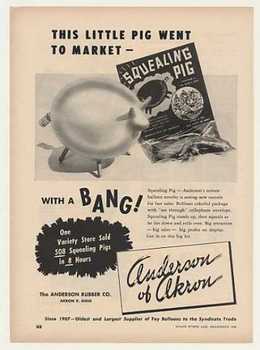
Anderson Rubber Co., (not incorporated) was established by S. W. Anderson in 1910, as manufacturer and distributor of balloon toys and rubber novelties.
The Lincoln Rubber Co., organized in 1914 at Bar¬berton, for the manufacture of rubber sundries, surgeons’ supplies, etc., capitalized at $175,000 of which $62,660 has been issued. The management is under Allyn R. McCoy, secretary and treasurer, and E. E. McNeely, auditor. Directors are Allyn R. McCoy, Frank McCoy, E. E. McNeely, Nora McCoy and John Hadfield.
The Pyramid Rubber Specialty Co., founded in 1920 and capitalized at $25,000 for the manufacture of rubber sundries and surgical supplies. L. N. Oberlin and R. C. Shaw were the first executives. Present officers include R. M. Pillmore, president; W. W. McIntosh, vice president; W. B. McIntosh, secretary, and A. C. Bame, treasurer and manager.
The Clinton Rubber Co., organized in February 1925, to make rubber products. Officers are Allyn R. McCoy, president; John A. Smith, vice president; E. E. McNeely, secretary ; L. N. Oberlin, treasurer, and T. S. Briggle, factory superintendent.
The Miles Tire & Rubber Co., formed in 1923 to act as a selling organization handling products of the Amazon and Monarch Rubber Companies. Officers are R. P. Johnson, president and treasurer; P. G. Himmelright, vice president and J. S. Baruch, secretary.
The Akron Rubber Reclaiming Co., formed in 1925 with B. O. Etling as president ; C. E. Bishop and Wm. Welch as vice presidents and W. H. Hart as secretary.
The Akron Rapatire Co., organized in 1924 with Fred F. Feldhaus as president and R. H. Noah as secretary and treasurer, manufacturers of tire wrapping machines.
Mention should be made of companies, not essentially rubber manufacturers, who supply the industry either with materials, technical service or machinery. Among these are the following:
The Rubber Service Laboratories Co., incorporated in 1921 for $100,500 as manufacturers of products connected with the rubber industry, accelerator specialists, laboratory experts, etc. R. C. Hartong was the first president. The company maintains laboratories in Akron while its manufacturing site is at Nitro, W. Va. Present officers include C. N. Hand, president and factory manager; E. J. Smail, vice president and sales manager; C. O. North, secretary and treasurer, and H. D. Hughes, assistant secretary and assistant treasurer.
The Leo Meyer Co., organized by Leo Meyer in 1915. Mr. Meyer served as president until 1920. Al¬bert Buxbaum now is president with J. W. Bent, secretary. The company deals in scrap rubber, tires and tubes and makes patches and reliners for repairing of tires.
H. Muehlstein & Co., Inc., importers and dealers in crude and scrap rubber, was founded in 1911. Present officers are H. Muehlstein, president; C. Muehlstein, vice president and J. Muehlstein, secretary and treasurer.
The centering of the rubber industry in Akron has given rise to many manufacturers of rubber and tire building machinery. Among these companies are the following:
The Akron Rubber Mold & Machine Co., established in 1909 by Stanley Harris who now is president and general manager and G. F. Hobach, now secretary and treasurer. W. E. Wilson is vice president and assistant general manager.
The Adamson Machine Co., founded in 1892 by A. Adamson, now the president, and John Denmead. The business was incorporated in 1907 for $500,000. W. E. Slabaugh is vice president and R. B. Koontz is sec¬retary and treasurer.
The Williams Foundry & Machine Co., founded in 1888 by J. K. Williams who served as president until 1918, resuming the presidency in 1924. F. E. Holcomb was president from 1918 to 1924. Present officers include J. K. Williams, president; H. L. Williams, vice president and treasurer; F. C. Vandergrift, secretary and treasurer.
The Vaughn Machinery Co., of Cuyahoga Falls, traces its origin back to a partnership in 1856, James A. Vaughn entering the business in 1861. Present officers are C. W. Vaughn, president; L. A. Vaughn, vice president, treasurer and general manager, and A. T. Yungman, secretary.
The Biggs Boiler Works Co., founded in 1889 by Lester Briggs and reorganized under the present name in 1900. Present officers, B. R. Barder, president; F. G. Sherbondy, secretary and treasurer; and G. J. Seeger, vice president.
The India Machine & Rubber Mold Co., organized in 1920 by W. C. Wenk and L. T. Cline. Present officers, R. D. McDowell, president; D. N. Rosen, vice president; R. E. Baer, secretary and George T. Williams, treasurer and general manager.
The Wellman-Seaver-Morgan Co., founded in 1903 with S. T. Wellman as first president. Present officers, Edwin S. Church, president; George W. Burrell, vice president and general manager; N. R. Fairlamb, secretary and treasurer; W. G. Hildebran, assistant secretary.
East Akron Machine Co., founded in 1918 by Frank F. Seidel, John T. Seidel and Albert R. Miller. Present officers are the same.
Electric Motor and Repair Co., founded in 1916 by S. W. Sweet, W. A. Heffelman and R. S. Whitright. Present officers, S. W. Sweet, president; Lee Whitright, vice president; W. A. Heffelman, treasurer and general manager, and H. S. Kish, secretary.
The Akron Standard Mold Co., organized in 1918 with $200,000 capitalization, by A. J. Fleiter. Officers now are Allen F. Ayers, president; A. J. Fleiter, vice president and general manager and C. W. McLaughlin, secretary and treasurer.
The Franz Foundry and Machine Co., organized in 1919 by C. Franz, Sr., one of the founders of the Williams Foundry & Machine Co., in 1901. Mr. Franz succumbed in April 1925. His son, C. W. Franz, Jr., now is in charge of the business.
The Akron Gear and Engineering Co., organized in 1912. Capitalized at $150,000. Present officers are J. H. Vance, president; N. G. Nelson, secretary and treasurer, and T. A. Seacrist, general manager.
The Akron Industrial Salvage Co., founded in 1918 by George W. Sherman, as a war conservation movement, handles the disposal of all types of byproducts and waste materials of Akron’s rubber factories. The company has $62,000 in common stock and $11,000 preferred stock. Officers are George W. Sherman, president, treasurer and general manager; A. Peterson, vice president, and L. E. Pierson, secretary and assistant manager.
Other suppliers of the rubber industry, located in or near Akron, include the Kuhlke Machine Company, the Akron Equipment Co., the McNeil Boiler Co., the Akron Machine Mold, Tool & Die Co., the Ohio Gear and Engineering Co., the National Sulphur Company, etc.
Akron has achieved world renown not alone as the rubber and tire manufacturing center of the world, but also through her pioneering in aeronautics for Akron had the first aeronautical factory in the United States, and built the first American-made free balloons and dirigibles. As far back as 1911 when lighter-than-¬air craft navigation was considered impracticable, Akron exploited this field courageously and pioneered the development of the free balloon. Two years later Akron made balloons achieved success, winning the national balloon races at Kansas City.
Ralph Upson and R. A. D. Preston, whose names have been linked with America’s aeronautical development almost from its inception, then brought fame to America and to Akron, winning for America for the first time the James Gordon Bennett international balloon race trophy at Paris. In 1916 and 1919, Akron made balloons again won the national races while in 1924 and 1925 W. T. Van Orman, pilot, and C. K. Wollam, aide, flying the free balloon the “Goodyear III” won the national balloon races and represented America in the international races abroad.
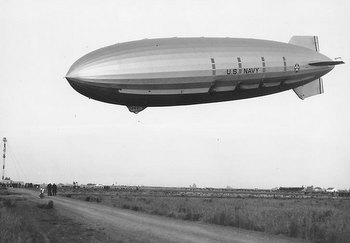
When America entered the World War, Akron played a prominent part in aeronautics, building for the government many free balloons, observation kite balloons and dirigibles. Goodyear aided in the establishment of an aviation training field near the city. Goodrich, Miller, Firestone, Goodyear and other Akron companies turned over much of their plant equipment for the manufacture of balloon cloth and dirigibles. The government centered its work of training air pilots in Akron, building huge barracks at Wingfoot Lake and conducting over 750 test dirigible flights and over 1,200 training flights in balloons. Akron-made dirigibles had achieved success before the war, and many were made for the Army and Navy, Ralph Upson and Herman Kraft figuring prominently in the design of new dirigibles. Later the Goodyear factories turned out the 20 immense gas ballonets for the rigid dirigible, the Shenandoah.
In 1924, Goodyear officials secured the rights for America, to the Zeppelin dirigible patents, and formed the Goodyear-Zeppelin Corporation, bringing to Akron officials of the Zeppelin factories from Friederichshafen, Germany, and a corps of expert Zeppelin builders. These men now are designing plans for huge Zeppelins a thousand feet long, which will be built in Akron.
Akron has always been considered, especially with respect to labor in the rubber industry, an “open shop” city. It has long had a nation-wide reputation of being a “good wage” town where working conditions also were much more favorable than in cities boasting of other industries.
Only one important effort was ever made to unionize workers in the rubber manufacturing plants and the effort was a short-lived failure.
It was in February 1913, that labor leaders, branded widely at the time as IWW agitators, established headquarters on South High St., and began to distribute union propaganda. Efforts were centralized at the larger factories including Goodrich, Firestone and Goodyear.
With respect to efforts at “picketing” factory entrances and extending their efforts to prevent strike¬breakers from being hired, the former factory came in for the greatest attention due to the factory being located nearer the central part of the city and its proximity to Main St.
Much feeling was aroused by the visiting labor workers. Police found it necessary to recruit large forces of citizen police officers to supplement the regular forces. Bankers, merchants, ministers and men prominent in various phases of civic endeavor took their turns as guard sentinels at places in the city where it was thought dangerous demonstrations might occur.
About 10,000 men were estimated to have left their work at one time during the walkout. Many of these were not in sympathy with the strike move but remained at home through fear of bodily harm. Many parades were held by the strike leaders and sporadic clashes between police and strikers resulted, without, however, serious results.
The strike was not backed by public sympathy and the effort died a sudden and natural death after about six weeks.
One of the most interesting spans in Akron’s history was the period from 1910 to 1920, which marked the most rapid expansion of the rubber industry and earned for Akron the name of “The fastest growing city in the United States.” Between those years the city’s population increased more than three-fold, reaching 208,000 under the 1920 census. The boom period reached its peak of acceleration between 1918 and 1920.
Thousands of men seeking employment in rubber factories here where wages were high, literally poured into the city. Rubber companies could not make tires fast enough. They could not build additions fast enough. They could not hire men fast enough. Seldom has any city in the world’s history experienced such a condition of expansion as that which held Akron in its throes in 1919 and 1920. Civic development could not keep pace with population growth. A housing shortage was precipitated upon the city. Attics and basements were converted into sleeping quarters for the city’s army of homeless rubber workers. Manufacturers hastily established subdivisions and feverishly built homes for their workers.
The rubber factories worked incessantly 24 hours every day. Men were given bonuses to speed their work. The city’s streets were clogged with men. There was as much activity all hours of the night as during the day, with thousands of men going to and from work. Hundreds of deaf mutes flocked to the city for work in the rubber shops, forming the largest colony of “Silents” in America.
Then came the precipitate slump late in 1920; the sudden falling off of tire sales; vast overproduction; the piling up of immense inventories of finished goods that could not be moved and that tied up millions of dollars of working capital; the tightening of credit. The depression caught many manufacturers with contractual obligations for future deliveries of rubber and cotton at peak prices even though the prices of these raw materials had dropped to one-third of the peak levels.
Employment in rubber shops here, which climbed to more than 75,000 men and women in June of 1920, dropped to less than 20,000 by December of the same year. There was a tremendous exodus of rubber workers. The low ebb of the slump came late in 1920 and early in 1921, but even after general business had begun to recover, Akron could not quickly regain its breath. The city’s recovery thus was slow. The atmosphere was filled with foreboding and uncertainty. Courageously, however, Akron manufacturers began to shape their come back. They worked courageously and gradually reestablished their trade channels, and liquidated inventories as rapidly as possible. From late in 1921 up to the present time, Akron’s growth has been steady and healthy, with a more stable class of labor employed, with manufacturers less reckless.
Akron’s centennial year finds the city back to the old peak levels of production and prosperity – but without the aspect of a boom period. It finds the rubber industry in Akron economically sound with all companies prospering and growing. Sales of Akron’s rubber companies are expected to exceed half a billion dollars in 1925. They were $387,825,922 in 1924 upon which sales revenues were earned net profits of $33,832,003, which indicates the industry’s present stability.
The balloon tire, pioneered in 1923 and 1924 by Akron companies, ranks as the city’s latest contribution to the transportation of the world, a contribution that has virtually revolutionized motor vehicle transportation.
And thus we find the Akron of today a city whose rubber products are indispensable to mankind, and necessary to the progress of civilization. In every phase of life and business and industry we find Akron made rubber products performing essential service. From rubber bands to huge conveyor belts and transmission belts found in factories, cereal mills and mines; from the tiniest of rubber washers, to giant pneumatic and solid tires; from rubber sheeting for the surgical operating room to the immense silken rubberized hulls of the giant Shenandoah; from the rubber insulation of telegraph and cable wires, and electric light wires, to the rubber panels which harness the electrical energy that makes possible the radio; from the small lengths of air brake and steam hose couplings connecting the coaches of every railroad train in the world, to the millions of feet of hose used by fire departments everywhere, and from sundry rubber commodities to toy balloons and rubber balls, Akron products are serving mankind. The world walks on rubber. It motors on rubber.
Today we find more than 30,000 different articles made out of rubber. Yet experts agree that the potentialities of rubber are as yet virtually unknown, which indicates Akron’s potentialities. For Akron a population of half a million assuredly is in the offing. That the rubber industry in Akron will double its present size in the next ten years, is a conservative prediction certain of realization.

